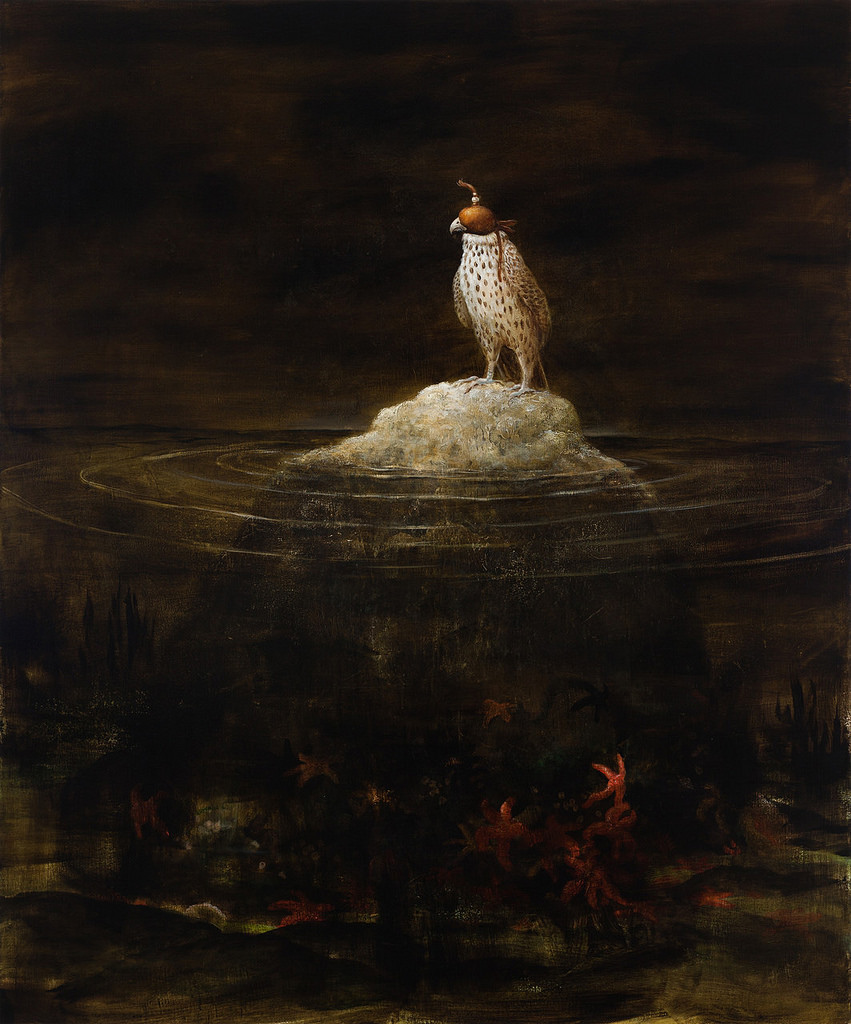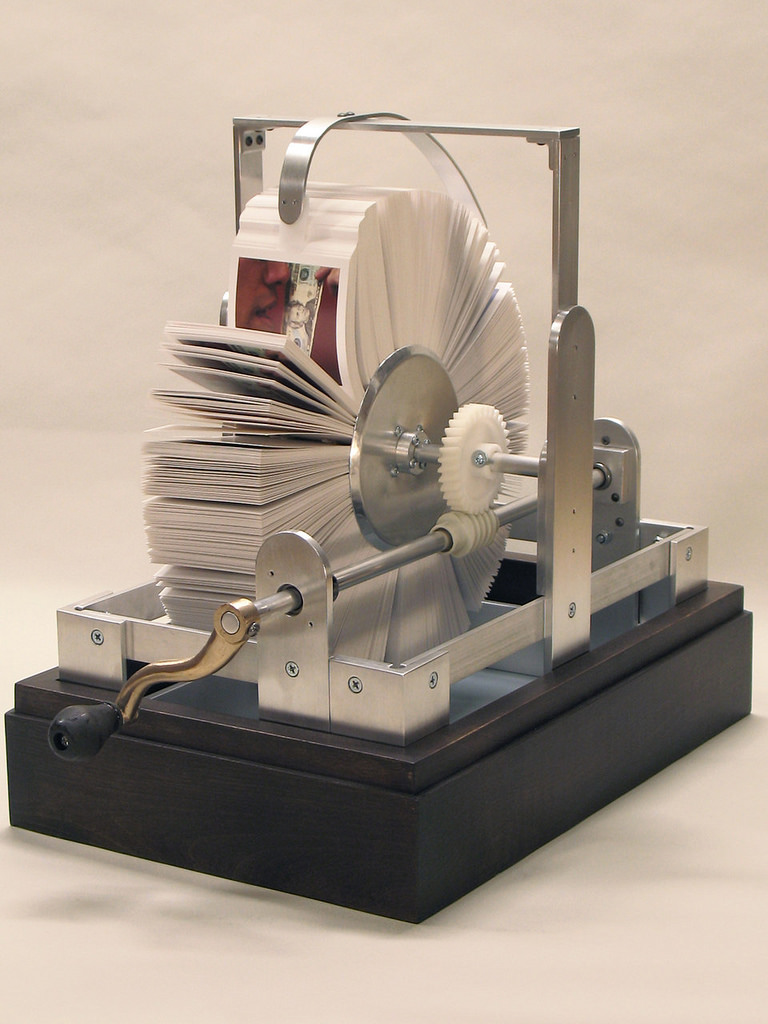For the next two months, The Arvada Center for the Arts and Humanities is displaying an enormous group exhibition of all Colorado-based artists. But this exhibition is more than just a viewing, it’s a juried show. Each artist contributed one or two pieces and the only theme is that they all practice within the state. Called Art of the State, the exhibition showcases the variety, depth and expertise of local artists. Although there are more than 100 artists on display until March 31, we’ve put together a list of 10 not to miss when you make a visit.
Liz Quan

“Flora” by Liz Quan
After spending many years as an art director and designer for major brands including American Express, J.Crew, Travel+Leisure and others, Liz Quan moved to Boulder in 2005 to pursue ceramics. Through a post-baccalaureate at the University of Colorado, Boulder, Quan honed her skill with clay, creating a soft, feminine and organic style of her own. Her delicate pieces have been displayed at Madelife in Boulder, Firehouse Art Center in Longmont and Walker Fine Art in Denver. Her piece, Flora, in the Art of the State exhibition showcases her attention to detail, with thin slices of perfectly crafted ceramics formed together to give the illusion of a naturally growing life form.
Jodie Roth Cooper

“Gleaming” by Jodie Roth Cooper
Industrial geometry is what Denver-based artist Jodie Roth Cooper creates. Using welding techniques and steel, the artist makes large sculptures — both free standing and hanging from walls or ceilings — that act as both illusion and obstacle. Though his materials are hard and heavy, some of his design work is as precise as lace, fooling the viewer into thinking of his work as fragile. His piece in the show — Gleaming — draws the eye from the sturdy, straight-lined cube to the triangulated design in the middle, giving it a hint of growth or movement.
Bonnie Lebesch

“M16 Body Pillow” by Bonnie Lebesch
Bonnie Lebesch has called Colorado home since 2011, when she moved to Fort Collins. But her path in art has persisted much longer than that, starting with a degree in the ’80s in graphic design and photography. Although much of her art tends toward the abstract, her recent work focuses instead on a range of contemporary issues. Instead of gestural strokes and fluidity, Lebesch has started using the painstaking medium of hand-stitching yarn — a process that can take nearly a year to complete one piece. Her piece in the show is titled M16 Body Pillow and through the juxtaposition of warm-colored embroidery and a cold, hard, steel gun, Lebesch mixes up the viewer’s emotions and encourages a more thorough examination of the image versus the connotation of the image.
Kathy Mitchell-Garton

“Maple” by Kathy Mitchell-Garton
Born in the Bay Area of California and raised in Golden, Kathy Mitchell-Garton finds much of her inspiration in her natural surroundings, and more broadly, the vast and rugged landscape of the American West. Even though that inspiration is rooted in grand vistas, her work is focused on the small details — from a sample of soil to the delicate veins of a leaf. Using beads, embroidery, hand-stitching and other textiles, Mitchell-Garton highlights certain parts of an image (that she often distorts before printing) and brings attention to the overlooked. In some ways, her work is psychedelic — presenting to the viewer an unfamiliar portal through which to examine a familiar object.
Gregory Santos

“Peace. Friendship. Settlement. Limits. 6” by Gregory Santos
Gregory Santos, in his past, worked as a bookbinder, book conservator, letterpress printer, fine art screen printer and printmaking studio manager. Now, he’s the director of printmaking at Art Gym on East Colfax, where he assists many full-time, emerging and hobby printmakers. With all of that experience, Santos’ expertise in printmaking runs deep, allowing him to take many risks and variations during the process. Printmaking is no easy feat — especially when small details are required — but Santos continues to display accuracy and a steady hand worthy of a surgeon.
Kevin Sloan

“As Above, So Below” by Kevin Sloan
For this list, Kevin Sloan is the only traditional painter, using acrylic on canvas most of the time. But his subject matter plays with the unexpected — adding a human-made pattern or object to a natural setting or providing a spotlight in an otherwise dark landscape, for instance. It’s a kind of visual representation of magical realism that authors like Gabriel Garcia Marquez would have adored. Sloan also sprinkles plenty of symbolism into his paintings from legends, mythology and folklore, giving the viewer a lesson to consider, even if that lesson is a riddle, like one out of Alice in Wonderland.
Lara Whitley

“Homecoming” by Lara Whitley. Photo by Ross Kribbs
Lara Whitley lives and works in Aspen, far away from the bustle of Denver and the Front Range, but her work strikes a chord especially with urban dwellers because she finds beauty in the broken, discarded and overlooked. Her piece for Art of the State, titled Homecoming is composed of different pieces of broken bottles, hanging from the ceiling in a way that resembles a mobile. There’s something chaotic about it — as if a picture was taken just as an explosion happened — but the outline of all the broken pieces comes together to form a simple house with a peaked roof. This exploration of movement, material and balance makes Whitley’s highly emotive, eliciting a range of reactions from viewers.
Sarah Winkler

“Smoke Signals” by Sarah Winkler
Born in England, Sarah Winkler’s art belongs in the Rocky Mountains where she now lives and works. Using acrylic paint on wood panels, Winkler pulls and brushes the paint in a series of patterns that replicate the natural environment. Her landscapes portray towering mountains and sweeping deserts — with a particularly mesmerizing series of the solar eclipse from a few years ago — and her choice in colors elevates each to a realm where it’s always the “golden hour.” The patterns Winkler works with are influenced by 15 naturally occurring geologic patterns in nature, hinting at the similarities between microscopic and macroscopic thinking on an ecological scale.
Pam Fortner

“Phantasm I & II” by Pam Fortner
Born in New Mexico, Pam Fortner now lives and works in Denver as a full-time artist. Her current body of work explores the relationship between rigidity and flexibility, using paper and steel as her main materials. Her sculpture and 3D art is highly influenced by the minutiae of nature, but by exasperating the scale, Fortner’s work takes on an almost alien appeal. The two sculptures in Art of the State display a beautiful ombre color scheme, moving from fiery hues at the top to burnt shades at the base.
Dave Seiler

“Phrenitiscope #24” by Dave Seiler
Displaying work in Denver since the mid-’90s, Dave Seiler brings the component of interactivity to his art. Most of his pieces require that the viewer become more than a witness, physically altering a gear, lever, wheel or other moving part in order to reveal the art in its entirety. This quirky aspect of Seiler’s work comes, as a result, from his background as a security guard in museums, where his job was mainly to stop visitors from touching art and exhibition objects. Seiler’s piece at Art of the State is called Phrenitiscope #24 and requires the use of a small crank.
—
